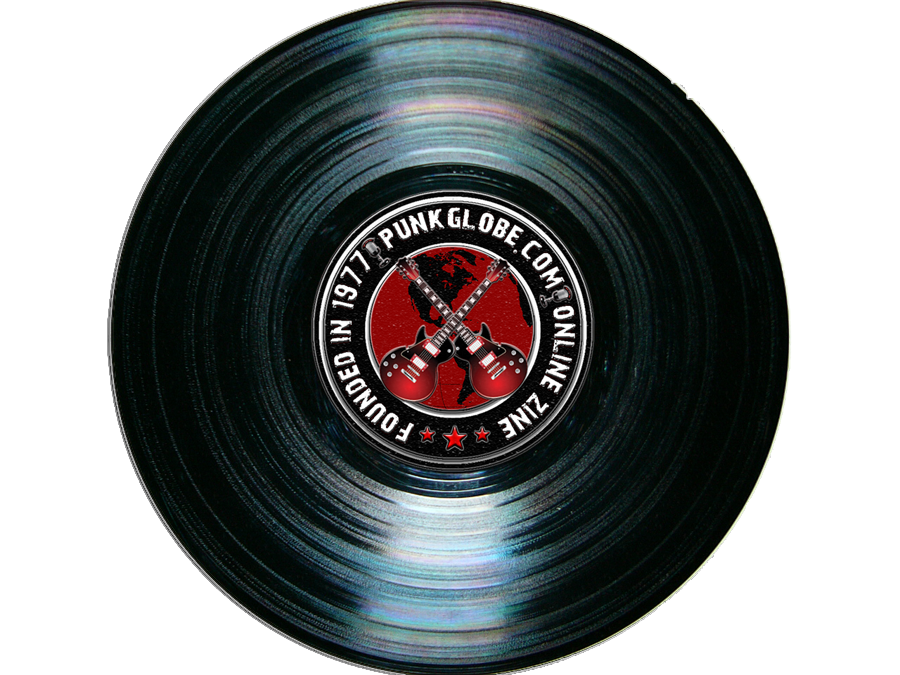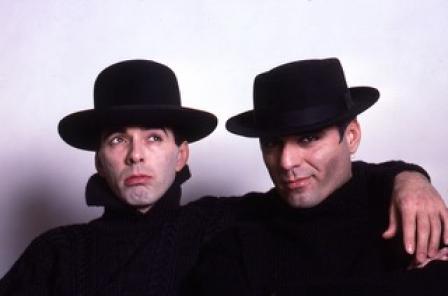The Fast were a footnote to New York’s already-peripheral 1970s proto-punk scene, so Ozone, their offshoot act, were a footnote to a footnote. But unlike tax codes and textbooks, in rock n roll the most fascinating stuff is in the margins. The musical underground has always been the tiny-font subscript giving meaning to the mainstream, and Ozone were absolutely magnifying glass-worthy marginalia.
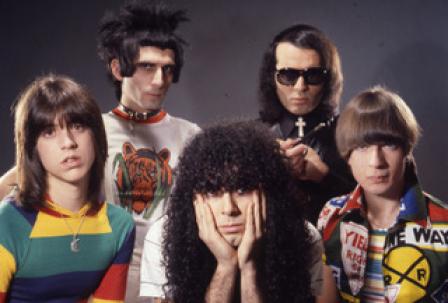
THE FAST Photo by Bob Ross 1976
Raised in Brooklyn by a doting matriarch, the three brothers who would become Miki, Paul, and Armand Zone defied borough boy expectations and became absurdist, flamboyant, glam rockers, led by the 1960s Who-obsessed Miki’s Technicolor power pop vision. Baby brother Paul was an eager social butterfly tagging along with his siblings’ band (fronted by middle child Armand, Mandy to his friends, singing guitarist Miki’s lyrics), and his photos documented the Fast’s rise from talent show rejects to fixtures at Max’s Kansas City. But in a blow to Armand’s ego, the ambitious Miki decided the younger Paul should join as lead vocalist, bumping their brother to keyboard and back ups.
Though he favored pirate/noire/proto-Goth fashion that suggested darkness, Armand Zone was no recluse, and loved being the center of attention. “He had such an exaggerated personality,” Paul recalls. “Mandy had a kind of regal air about him, like he was the king of the room, rising above everyone. But he was a sweet, generous king.”
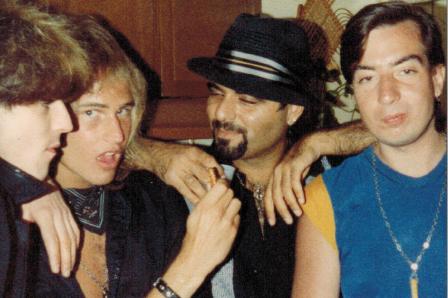
Being a frontman fit this personality, but submitting to Miki’s direction did not, and being demoted to backup was certainly a problem. The band thrived with Paul in front, eventually drawing the attention of Ric Ocasek who helped record remarkable demos, gaining major label interest (scuttled by greedy management). But to some old fans missed the Fast’s original, more unconventional vocalist.
To appreciate the fondness for Mandy amongst fans of challenging music, pop into a peep booth for Carter Stevens’ 1978 sexploitation flick PUNK ROCK (a bleak detective porno rejiggered as punk-themed by having the mustachioed dick grill suspects at Max’s between sets). In it the five-piece Fast power through “Boys Will Be Boys” with Armand on keys and ostensibly backup vocals. Ostensibly because he is not only singing louder than Paul but his bizarre falsetto defies the melody, key, and spirit of the song. The only reason it would be inaccurate to say he sounds something like a coked-up Elmo is that he sounds exactly like a coked-up Elmo. When the doomed detective shakes his head, attempting to reboot his hearing by physically adjusting his ears after the performance, one has to assume it is Mandy’s magic that scrambled his senses.

MANDY ZONE Photo by Emile Greco 1988
But Armand’s most dissonant devices were employed more out of defiance than tin ear. He was trying to stand out from the back, and refusing to submit to Miki’s direction. Frustrated by his demotion, and lack of input, Mandy left the band, and created a suite of his own songs that demonstrated a precise, controlled sense of craftsmanship.
Ozone played their first show November 5, 1979, also recording their first song before the decade’s demise. “Shotgun,” included as a bonus track, is a glorious, menacing slice of dark power pop. Producer Bobby Orlando utilizes the octave sequencing that would make him a dance legend as Bobby O in the 80s (producing classics for Divine, The Flirts and Pet Shop Boys) and Blondie’s Gary Valentine handles guitar with the precision and restraint expected from a converted bass player.
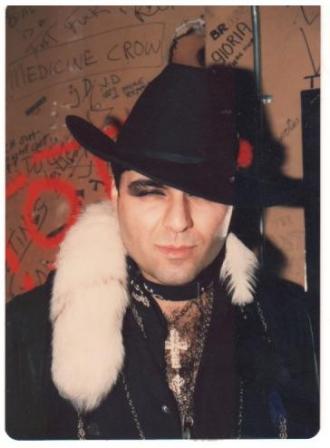
Though the group would average around two shows a month for the next three years, they were as much bedroom band as punk club mainstay. Zone was an artist composing dramatic music to match his histrionic sense of style, creating polished solo home recordings with his keyboard, tiny drum machine, and meticulously handwritten lyric sheets. These songs were his vision, and the band he assembled added energy and fury.
As demonstrated on this collection, bass player Tommie Moonie (who’d been in the Fast, leaving because live performance demands were too much) and drummer Tedd Dolhon made up a manic rhythm section, providing ridiculous energy. Guitarist Jon Pilkington channels Johnny Thunders’ spirit, with sprinkles of Ramones (and on “Lay Away Plan” even a little Misfits), but best yet, he often brings to mind a bar band Priest/Maiden cover act. Though they mostly shared musical tastes, Mandy was the only Zone with an affinity for the New Wave of British Heavy Metal.
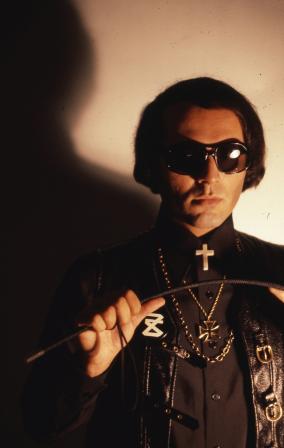
Ozone played Max’s, CBGB, Zappa’s in Brooklyn, Coventry in Queens, and other clubs, paired with like-minded weirdos like Von Lmo, Jayne County, Alan Vega, and The Fast. Ozone earned a couple hundred followers, and developed into a solid live act. Mandy was much happier as a bandleader, and a much better singer than with the Fast. While these songs have hooks, and solid structure, and his vocals are sometimes even pretty, what made Ozone special was when he seasoned songs with stranger vocal flavors. “This Time Is Forever” opens with a bird howl, then contrasts falsetto flights with extra low doo wop la la la’s, and during the crescendo the singer calls and responds with himself, alternating his high and low voices. On the majestic “I Could Have Been” his phrasing is pure Phil Spector, yet somehow he makes bat sonar shrieks seem just as poppy.
Mandy’s vocal and new wave keyboard runs were always dramatic and often histrionic, and the heavy bowery rocking his stage-mates unleash is all they can do to keep up. Mandy held court, with borderline-smarmy baritone stage banter, and Phantom of the Opera flair. He loved the spotlight, and it loved him. But Armand Zone did not have the drive to succeed that made Miki so single-minded, and after years of little growth, Tommie left the band and Jon’s move to Boston, Mandy laid Ozone to rest.
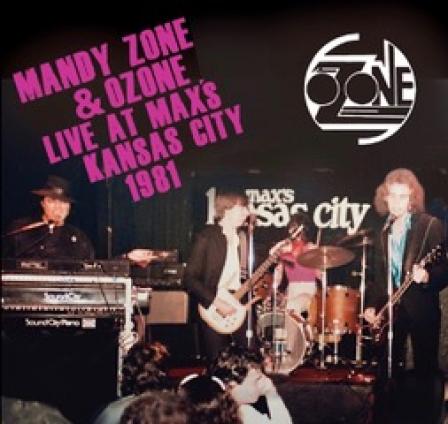
CD/LP Cover
After Ozone ended, Mandy was occasionally lured into the studio by his brothers to sing back up on their recordings and for a solo Armand Zone single & EP release of past Ozone recordings. Mandy had not been the last musician to quit the Fast, and after Spinal Tap-worthy attrition whittled the band to a duo they made a transition to electronic dance music and, as Man 2 Man, bizarrely became pop sensations in Mexico, the UK and through out Europe (where their song “Male Stripper” became a legit pop hit single). Paul subsequently had Armand appear on a few projects (sometimes billed as Zone Bros), as he rode out his Top of the Pops success. A Zone Bros cover version of Sylvester’s “Do Ya Wanna Funk” was the closest Mandy came to success by having a hit on the dance club scene. Mandy’s last appearance on wax was in 1989, singing back up with Debbie Harry on Paul’s Man To Man “I’ll Try Anything Once” single.
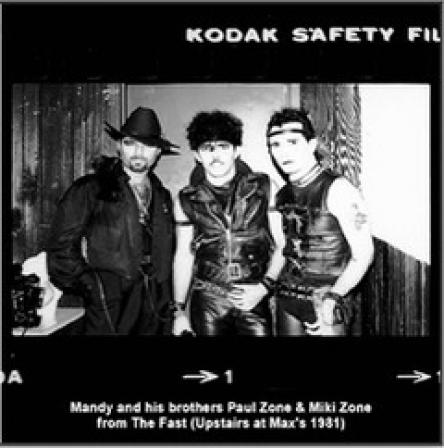
Photo by Cathy Miller 1981
But for the most part, Armand Zone retired from rock. Paul became, by default and his own nature, the archivist of the family’s musical escapades. Mandy’s bedroom recordings are digitized, his photos, flyers, and set lists organized, and now this dynamic live document has been restored. Despite Armand’s Freddie Mercury-esque love of the spotlight, Ozone rocked in the margins. But these joyful noises, finally reaching new ears, should help secure Mandy’s throne, where sits the regal ruler of his own weird, wonderful footnote.

